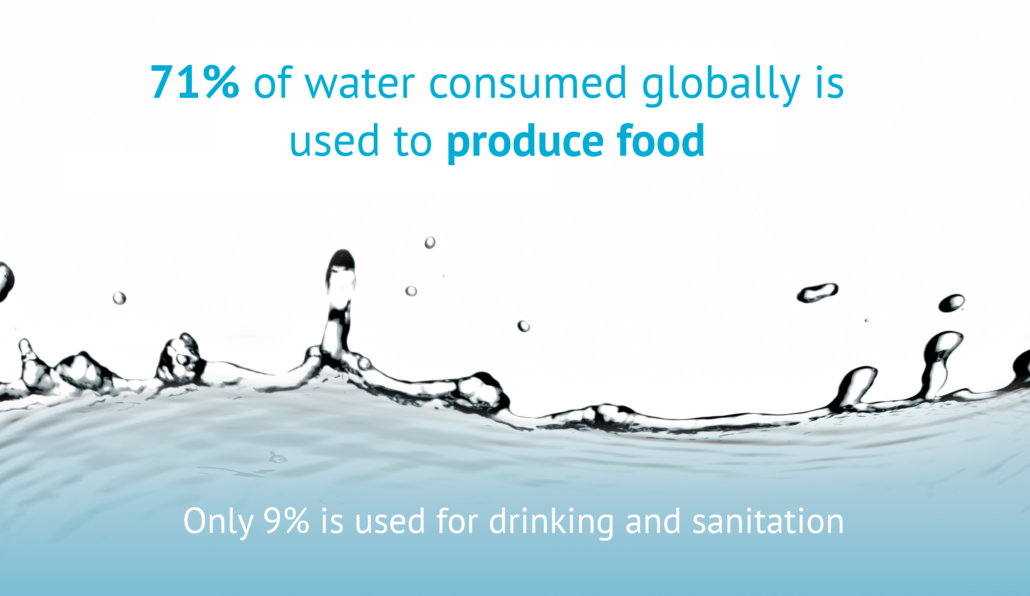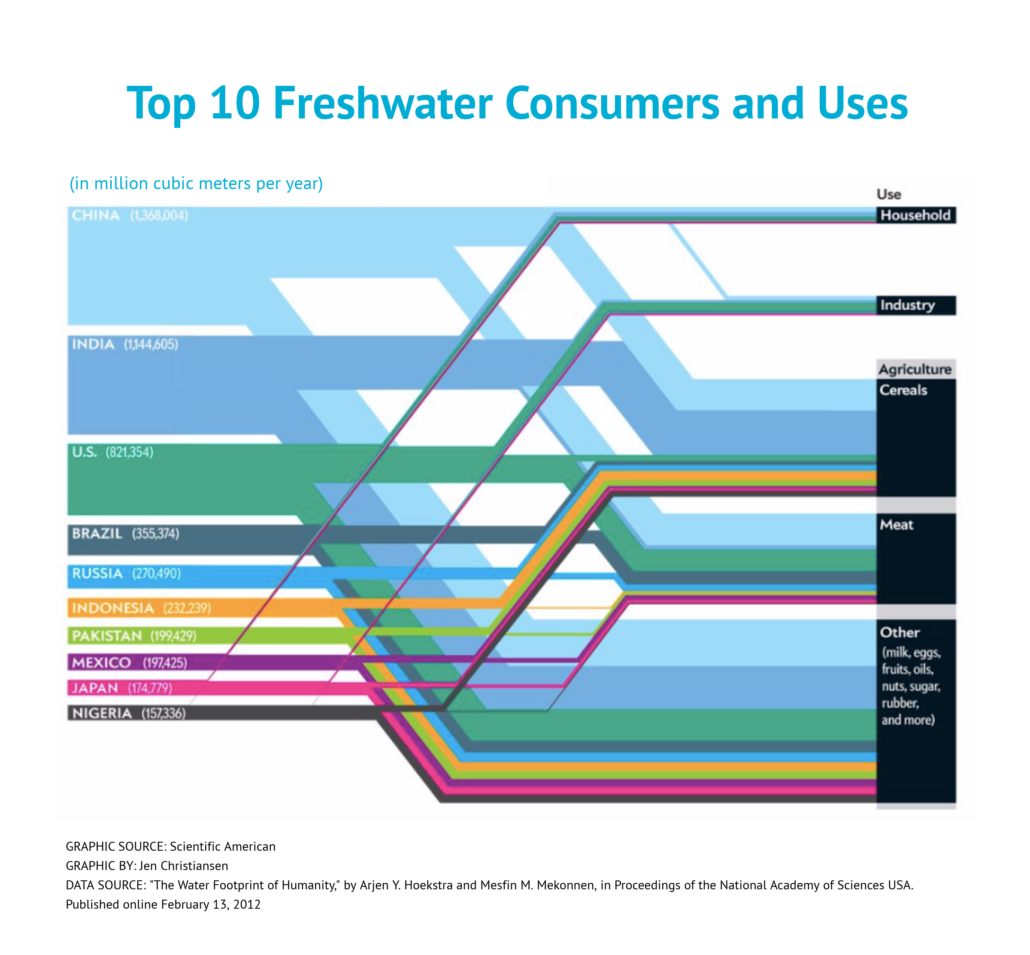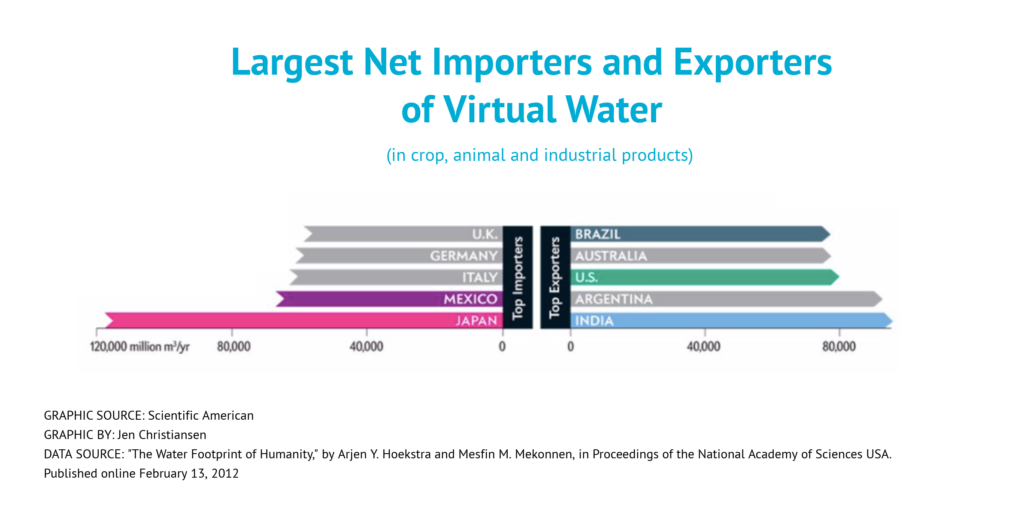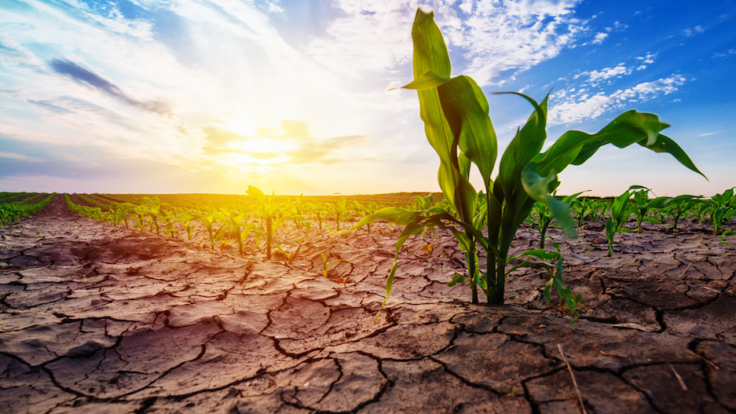Published 03 May 2019
Over 70% of water consumed globally is poured into crop and livestock production. But water scarcity is threatening the future of global agriculture trade.
Water under pressure
In March, the Chicago Council on Global Affairs sounded an important alarm in its annual Global Food & Agriculture report: The water we need to drink, to grow food, and to produce industrial goods is under stress and becoming scarcer in parts of the world. Unless we manage our vital water resources better, important progress in global food and nutrition security and resiliency will be rolled back.
Worse, increasing conflict over water sources has generated forced migration and fueled violent conflict within countries and communities, deepening the economic and security risks for affected populations. In recent years, food and water insecurity have caused or exacerbated instability in Haiti, across the Middle East during the Arab Spring, and most recently in Venezuela. Analysts have even spotted a correlation between periods of high or low rainfall and militant activity in East Africa.
No food without water
We need water for a variety of uses, but chief among them is to grow food. Seventy-one percent of water consumed globally is poured into crop and livestock production. Twenty percent goes to industrial use and just nine percent goes to drinking and sanitation. Given population growth, rising incomes, the exhaustion of arable land, and migration to cities among other trends, farmers must continually improve yields, which drives intensification of agricultural production around the world.

Many agricultural producers live in already water-stressed areas. By some projections, over half of the world’s population will be at risk for water scarcity by 2050 at a time when water needs for agricultural production will have grown over 20 percent. The mismatch puts as much as 39 percent of cereal production and 49 percent of global grain production at risk due to water stress. Farmers worldwide need adequate water supplies to reliably produce and trade diverse, micronutrient-rich foods such as fruits, vegetables, animal-source proteins and dry season crops that might include squash and beans.

“Virtual water” trade
In studies on water resource management, “virtual water” describes the volume of water used to produce a service or a good, including agricultural commodities. The water used in crop production, for example, can be measured in terms of a water source depleted or water used in irrigation. Global flows of virtual water are estimated by multiplying how much water it takes to produce crops and livestock by the volume of crops and livestock traded. The more effective an irrigation technique used in crops that are traded, the more water that can be saved.
Where the policy discussions get more complicated is when it’s suggested that countries reduce their own production of water-intensive crops in favor of importing crops that are produced elsewhere using more water-efficient methods – or simply to conserve their own water resources. On paper, this could produce “global water savings”.

Water alone is not a comparative advantage in trade
The idea is borrowed from the concept of comparative advantage in international trade. The availability of rainfall or access to water resources is only relevant, however, when combined with the availability, cost, and productive use of other inputs for production, and when the opportunity costs of diverting water to other uses are considered in the context of two or more countries engaging in trade.
There is no comparative advantage conveyed by water resources alone. Trading patterns are not consistent with water resource endowments – some water-abundant countries are net food importers (perhaps because they have limited land like Japan or Singapore) and some water-scarce countries export food. Arable land, soil health, and a total profile of agricultural productivity would offer a better basis for understanding the strength of countries’ agricultural export profiles.
In a free market, only increased demand for crops specifically produced for water efficiency, perhaps in combination with policies that encourage efficient water use, could induce shifts in global trade. Even then, it would be unlikely that water preferences on the part of agricultural buyers could make much of an impact in the face of myriad existing barriers to global free trade in agricultural products (something WTO members have been unable to move forward in over 20 years of negotiations).
“More crop per drop” and other solutions
If the public policy value of managing trade in virtual water is limited, what kinds of solutions offer better opportunities for managing scarce water resources to ensure we can continue growing enough food?
The Chicago Council’s report aggregates and recommends a number of steps governments, researchers, and producers can take to more effectively manage water resources in ways that would also benefit farmers and ensure their ability to meet growing populations’ food and nutrition needs.
They include the widespread deployment of low-cost precision agricultural technologies such as solar-powered irrigation pumps. Combining aerial imagery with soil sensors creates real-time data for both agricultural and water management. Even small-scale tractors can be equipped with GPS to monitor and conserve applications of critical inputs, which helps farmers ensure their soil remains healthy, soaking up rainwater and holding nutrients.
Water management for global trade in food
Improved governance by communities to better manage withdrawals for municipal, industrial, and agricultural uses, and watershed-level planning are also needed to ensure water security into the future. The Nature Conservancy is even trying out innovative financial approaches, using investment capital to purchase water through markets and then leasing or selling water rights back on the market to farmers and cities while diverting some of the water back to natural ecosystems. Market-based approaches with return-on-investment help get the pricing right, discouraging wasteful or overuse of water and ultimately reducing costs for users, including farmers.
Global trade in agricultural products is vital to move food from where it can be efficiently produced to where it will be consumed, to help promote access to diverse, nutrient-rich diets and stave off food insecurity, and to support millions of farmers who make a living growing our food. Food needs water to grow. Better water management into the future will is turn critical to support expanding global trade in food.
Dive deeper in these waters:
- U.S. Government Global Water Strategy, 2017
- The Chicago Council on Global Affairs, From Scarcity to Security: Managing Water for a Nutritious Food Future
- AQUASTAT Global Information System on Water and Agriculture maintained by the Food & Agriculture Organization of the United Nations
© The Hinrich Foundation. See our website Terms and conditions for our copyright and reprint policy. All statements of fact and the views, conclusions and recommendations expressed in this publication are the sole responsibility of the author(s).




